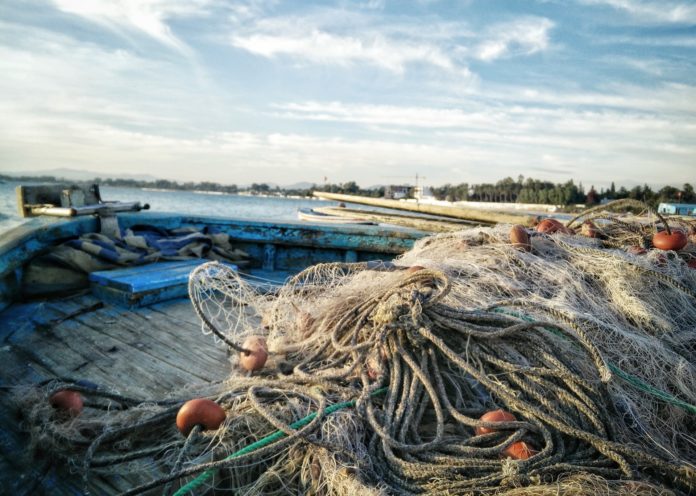The ghosts of fishing trips past are haunting our oceans, and for aquatic species, this could spell disaster. A recent study of abandoned, lost, and discarded fishing gear (ALDFG) in Southwest Nova Scotia revealed hundreds of animals that had been caught long after the gear was in use, including five species-at-risk that were inadvertently captured as bycatch.
The study was based out of Dalhousie University and published in the Marine Pollution Bulletin.
Commercial fishing is bad news for the environment
Over the past few years, commercial fishing has led to major environmental problems. Studies have shown that overfishing is largely responsible for a 71% decline in shark and ray populations worldwide, and that bottom trawling is releasing hundreds of millions of tons of carbon into the ocean every year.
While many of these environmental impacts are clear, the team at Dalhousie was interested in learning how so-called “ghost gear” — all the traps, nets, hooks, and other fishing equipment that gets left behind in the ocean — is contributing to this problem.
To do this, they carried out a systematic search of more than 1,500 square kilometres of ocean floor off Southwest Nova Scotia. The area they surveyed represents Canada’s most productive lobster fishing region, and was therefore rife with fishing gear that had been abandoned over the years.
“[A]lthough we have known about the problem of ALDFG or ghost gear and were aware of where the hot spots are in the region, this is the first time that a systematic project has focused and targeted on retrieving the gear, while simultaneously quantifying the environmental and economic impacts,” explained co-author Tony Walker, an associate professor in Dalhousie’s School for Resource and Environmental Studies, in a press release.
Ghost gear continues to catch aquatic species
Over the course of 60 retrieval trips during the summer and fall of 2020, Walker and his colleagues were able to find and categorize more than 7,000 kilograms of ghost gear from the ocean floor. Two thirds of the recovered gear was in the form of lobster traps, while 22% (or 1,500 kilograms) was made up of deep-sea dragger cables.
Worryingly, the team also found that this abandoned ghost gear continued to catch aquatic species long after it was in use. They were able to find and release hundreds of animals across 15 different species, including five that are currently categorized as at-risk: Atlantic wolffish, Atlantic cod, cusk, and two species of sculpin.
Many animals also likely died while trapped in the ghost gear, but the authors note that their remains would have decayed or been eaten long before the gear was recovered.
While these environmental impacts are concerning, the authors went on to investigate the economic impacts of ghost gear as well.
Many abandoned and lost lobster traps were still in working condition, and continued to catch hundreds of lobsters that would have gone on to be sold for a profit. Overall, the authors estimate that these economic losses could total more than $175,000 each year.
“[Our study] tells us that there are not only obvious environmental impacts of leaving this gear in place, but it also highlights the potential economic losses that can be incurred without mitigative or policy action,” Walker said.
There are ways to help
Ghost gear is a major problem that requires the attention of policymakers worldwide — but thankfully, there are ways that you can help.
By downloading the Ghost Gear Reporting App and reporting any lost or discarded gear that you notice, you can help scientists better understand the scope of this problem while also flagging harmful fishing-related pollution for future disposal.








































